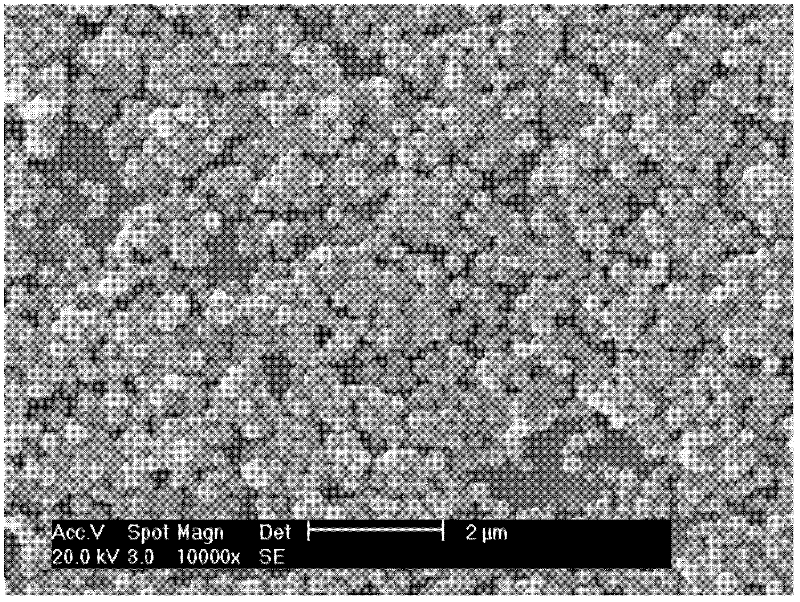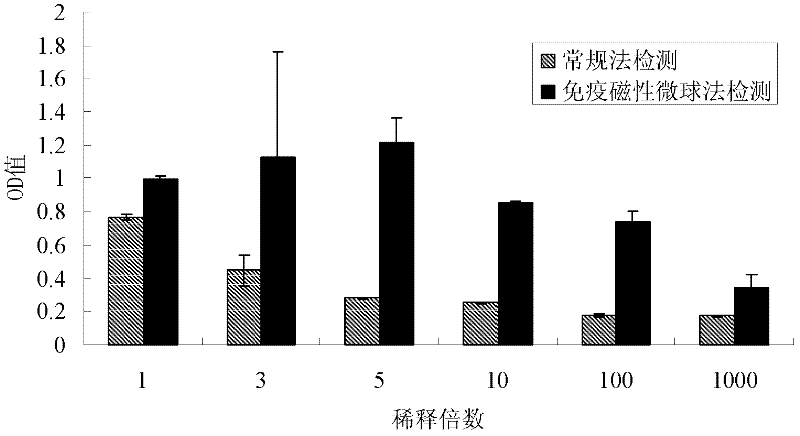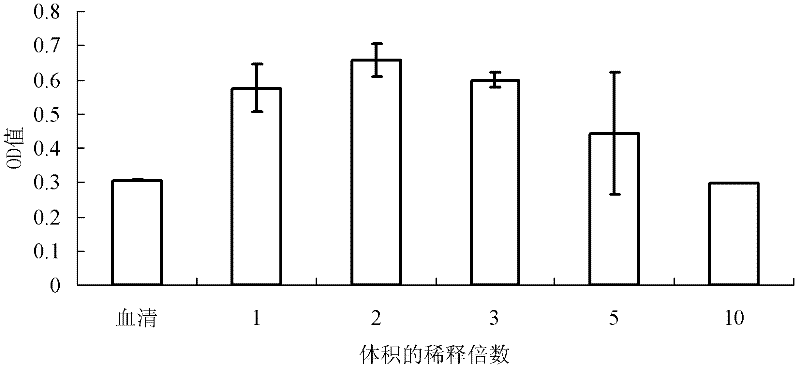Method for detecting allergen-specific antibody in serum
An allergen, specific technology, applied in the field of diagnosis, can solve the problem of low sensitivity and accuracy, and achieve the effect of improving sensitivity
- Summary
- Abstract
- Description
- Claims
- Application Information
AI Technical Summary
Problems solved by technology
Method used
Image
Examples
Embodiment 1
[0020] 5mmol FeCl 3 .6H 2 0, 3mmol citric acid and 20mmol urea were dissolved in 20mL ethylene glycol solvent, the mixed solution was placed in a 30mL hydrothermal kettle, and heated at 200°C for 6 hours, and the black precipitate was washed 3 times with ethanol and deionized water respectively, and dissolved In deionized water and adding 0.02% (w / v) sodium azide for long-term preservation, the prepared figure 1 The particle size shown is about 200nm, the surface small molecule carboxyl group modified hydrophilic monodisperse Fe 3 o 4 magnetic microspheres.
Embodiment 2
[0022] Immunomagnetic microspheres were prepared by coupling goat anti-human IgE antibody.
[0023] (1) Using 25mM MES (pH=6) as the buffer, take 9 μL, 15 μL, 30 μL, 90 μL of magnetic microspheres (concentration: 10 mg / mL), wash twice, and rotate for 10 min;
[0024] (2) Use freshly prepared EDC and NHS solutions as cross-linking agents, the concentration of EDC and NHS is 50mg / mL, and the solvent is 25mM MES (pH=6). Add 20 μL of cross-linking agent to each mg magnetic microsphere, and incubate with tilt rotation for 30 min at room temperature to activate the magnetic microsphere;
[0025] (3) Wash the activated magnetic microspheres twice with MES buffer, add 24 μL of goat anti-human IgE antibody (2.5 mg / mL), continue to add 6 μL of MES, vortex and incubate at room temperature for 1-2 hours;
[0026] (4) After incubation, magnetically separate, remove the supernatant and put it in a new tube (reserved for measuring the coupling rate); coupling rate (%) = (concentration of mo...
Embodiment 3
[0032] The 200nm immunomagnetic microspheres (15:1) prepared in Example 2 were used to capture the specific IgE antibody in the serum sample, and the detection effect of the method using the immunomagnetic microspheres on mite-specific sIgE was analyzed. The specific operation is as follows:
[0033] Take the immunomagnetic microspheres in a clean centrifuge tube according to the demand, add the buffer solution according to the volume ratio of 1:10 (10 μL immunomagnetic microspheres plus 100 μL activation buffer), and mix well. Magnetically separate and remove buffer. Wash again in this way, and then add activation buffer to make up to the original demand.
[0034] The serum samples containing mite-specific IgE (sIgE) to be tested were diluted 1-fold, 3-fold, 5-fold, 10-fold, 100-fold, and 1000-fold respectively for later use. Add 2 μL of activated immunomagnetic microspheres (concentration: 5 mg / mL) to each centrifuge tube, then add 100 μL of the above-mentioned serum sampl...
PUM
 Login to View More
Login to View More Abstract
Description
Claims
Application Information
 Login to View More
Login to View More - R&D
- Intellectual Property
- Life Sciences
- Materials
- Tech Scout
- Unparalleled Data Quality
- Higher Quality Content
- 60% Fewer Hallucinations
Browse by: Latest US Patents, China's latest patents, Technical Efficacy Thesaurus, Application Domain, Technology Topic, Popular Technical Reports.
© 2025 PatSnap. All rights reserved.Legal|Privacy policy|Modern Slavery Act Transparency Statement|Sitemap|About US| Contact US: help@patsnap.com



